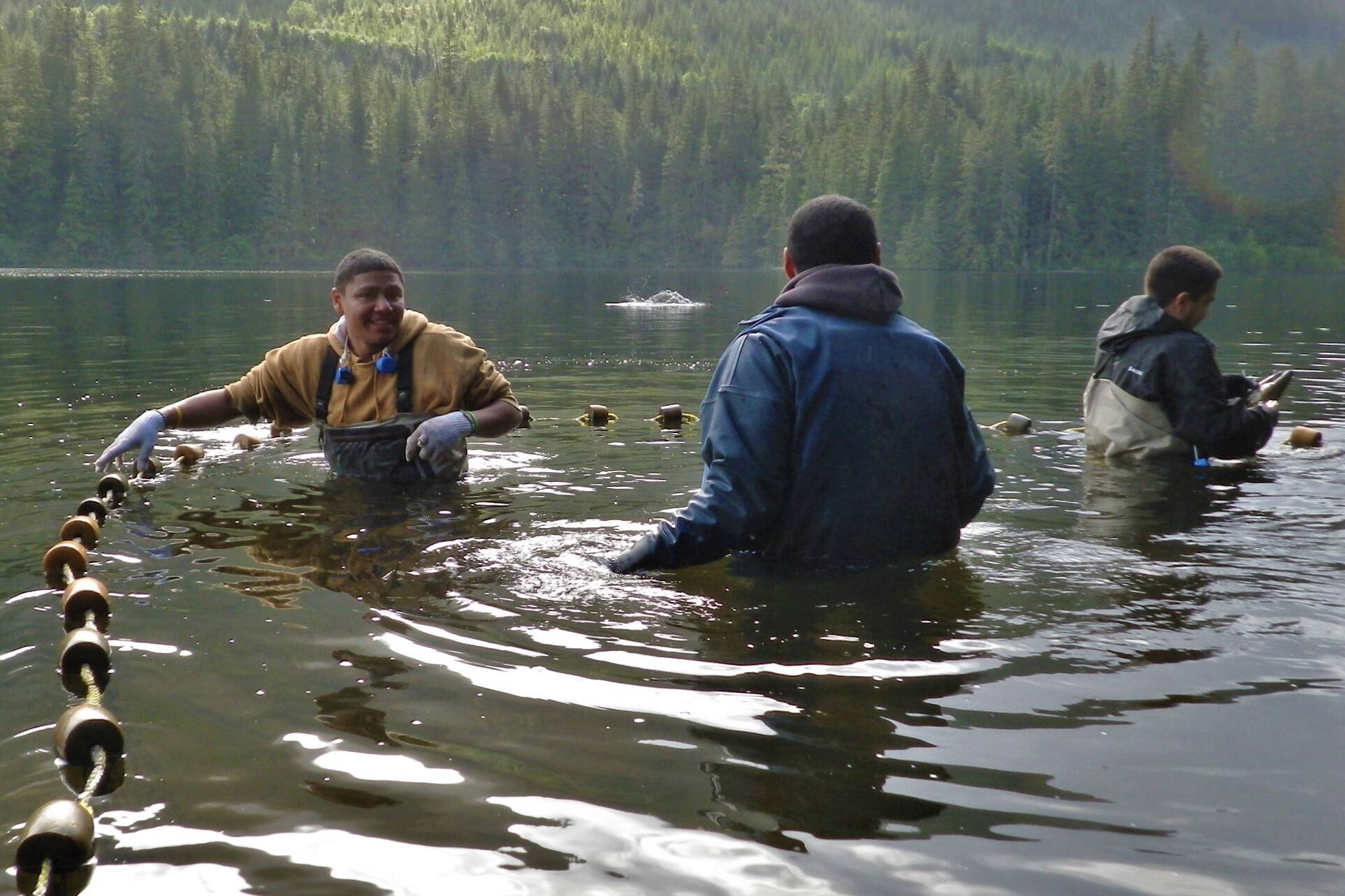Alaska’s mariculture industry just got a $49 million boost from the federal government.
The U.S. Department of Commerce’s Economic Development Administration last week named a coalition of Alaska groups — led by Juneau’s Southeast Conference — as one of 21 grantees for the Build Back Better Regional Challenge. The cohort, collectively referred to as the Alaska Mariculture Cluster, presented a goal of growing Alaska mariculture into a $100 million industry over the next 10 years.
Mariculture refers to marine farming or aquaculture in marine environments. In Alaska, that includes operations like shellfish production and seaweed farms.
Among the component projects to be funded by the award are a revolving loan fund to provide capital for private investment in new mariculture businesses and a technology and innovation competition that addresses challenges to mariculture development. Workforce development, marketing, green energy and equipment and technology are also areas the Alaska Mariculture Cluster plans to address.
That challenge, a $1 billion grant competition, was made possible by the federal American Rescue Plan. The competition consisted of two phases and was touted as the “marquee” of the EDA’s programs meant to boost economic recovery in response to the COVID-19 pandemic.
An EDA press release naming the Alaska Mariculture Cluster as one of the program’s grantees specifically celebrated the support the industry would get through the award.
“With $49 million in funding from EDA, the Alaska Mariculture Cluster will support the region’s growing mariculture industry and ensure that it provides shellfish and seaweed for the long-term benefit of Alaska’s economy, environment, and communities,” the release said.
U.S. Secretary of Commerce Gina Rimondo emphasized the opportunities a robust Alaska mariculture industry will provide for tribal and rural communities.
“This EDA investment will create new opportunities across Alaska that are directly aligned with the needs of tribal and rural communities and can provide long-term benefit to the state’s economy and environment,” Raimondo is quoted as saying in the department release.
Though the coalition behind the project is led by Southeast Conference, it also includes a host of other groups located throughout Alaska, including the Kenai Peninsula Economic Development District.
Other participants include the Prince William Sound Economic Development District, the Southwest Alaska Municipal Conference, the State of Alaska, the Central Council of the Tlingit and Haida Tribes of Alaska, the Alaska Mariculture Alliance, Alaska Sea Grant, Mariculture Research Training Center, Alaska Fisheries Development Foundation, the University of Alaska system, the Alaska Blue Economy Center and the Alaska Longline Fishermen’s Association.
It’s collaboration between all of those stakeholders, KPEDD Executive Director Tim Dillon has maintained, that made the Alaska Mariculture Cluster stand out to the feds.
“The big deal about this project is collaboration,” Dillon said Monday. “That was the thing that everybody wanted to see when they were looking at things nationally. They were looking at what kind of collaborative efforts can be put together.”
Still, a $100 million industry won’t be built overnight. Dillon said the award is a five-year grant, meaning they’ve got time to build up a long-term, sustainable mariculture landscape in Alaska.
“Our goal is not to be running mariculture five to 10 years from now,” Dillon said. “Our goal is to have helped the mariculture industry to a point where they’re up and running … it’s their operation.”
Dillon’s previously described mariculture on the Kenai Peninsula as a cottage industry. He said Monday that a consistent need that emerged throughout the application process was for more capital. He said the Alaska Mariculture Cluster’s role will be to minimize the barriers that can prevent those businesses from thriving.
“Our goal here on the Kenai Peninsula is that if mom and pop want to turn their mariculture operation into a full-blown, 12-month-out-of-the-year industry … we want to be there to help them,” Dillon said.
As the Alaska Mariculture Cluster moves forward, Dillon said he encourages people on the peninsula interested in mariculture to reach out to KPEDD.
“We can sit down with you and try to help make that happen,” he said.
More information about the Alaska Mariculture Cluster can be found at eda.gov/arpa/build-back-better/finalists/Southeast-Conference.htm.
Reach reporter Ashlyn O’Hara at ashlyn.ohara@peninsulaclarion.com.

